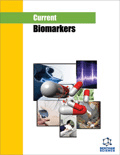Abstract
Background: The problem of diabetes and associated treatments had mentioned herbal plants in several studies. The cardioactive Terminalia arjuna has also been reported for antidiabetic principles yet no scientific evidence is available. Hence, an attempt has been made by the authors to find the probable mechanism and biomarker involved for α-amylase enzyme inhibition
Objective: The extraction of bark of Terminalia arjuna using room temperature extraction (RTE) and soxhlet extraction (SE), estimation of total percentage yield, the percentage yield of marker compounds arjunic acid and arjunolic acid present and in vitro evaluation of α-amylase inhibitory activity of the extracts has been investigated. Method: The solvent system used for HPTLC was toluene: acetic acid: ethyl acetate (5: 5: 0.5) and the corresponding spots to the marker compounds were quantitatively estimated via standard plot of both the marker compounds. The molecular docking was performed in dry lab to evaluate the effect of arjunolic and arjunic acid on the α-amylase enzyme protein. Scanning Electron Microscopy was done to study the effect of extraction methods on crude and exhausted drug. The in vitro α-amylase inhibitory activity of the two extracts was performed spectrophotometrically taking acarbose as standard. Results: The total percentage yield was 2.8% and 6.7%, while the percentage yield of the marker compounds was 0.63% and 0.98% of arjunic acid whereas 0.87% and 1.12% of arjunolic acid in RTE and SE respectively. The molecular docking suggested that the arjunolic acid (-47.703Kcal/mol) exhibited better results of inhibition compared with the free energy values of arjunic acid (-30.836Kcal/mol) and standard acarbose (-43.439Kcal/mol). Scanning Electron Microscopy showed that the SE exhibited more rupturing of cell walls than RTE and leads to better extraction of phytoconstituents. The in vitro α-amylase inhibitory activity of the two extracts and the results of IC50 value for the two extracts showed better inhibition viz. 76.12 + 0.40μg/mL and 65.61 + 0.47μg/mL for RTE and SE respectively as compared to standard acarbose 83.18 + 0.38μg/mL. Conclusion: Hence, there exists correlation between the higher anti-diabetic potential of SE of Terminalia arjuna plant, as compared to RTE on the basis of α-amylase inhibition as demonstrated by molecular docking and wet lab results.Keywords: α-Amylase, arjunic acid; arjunolic acid; HPTLC; room temperature extraction (RTE); Soxhlet extraction (SE).
 8
8


